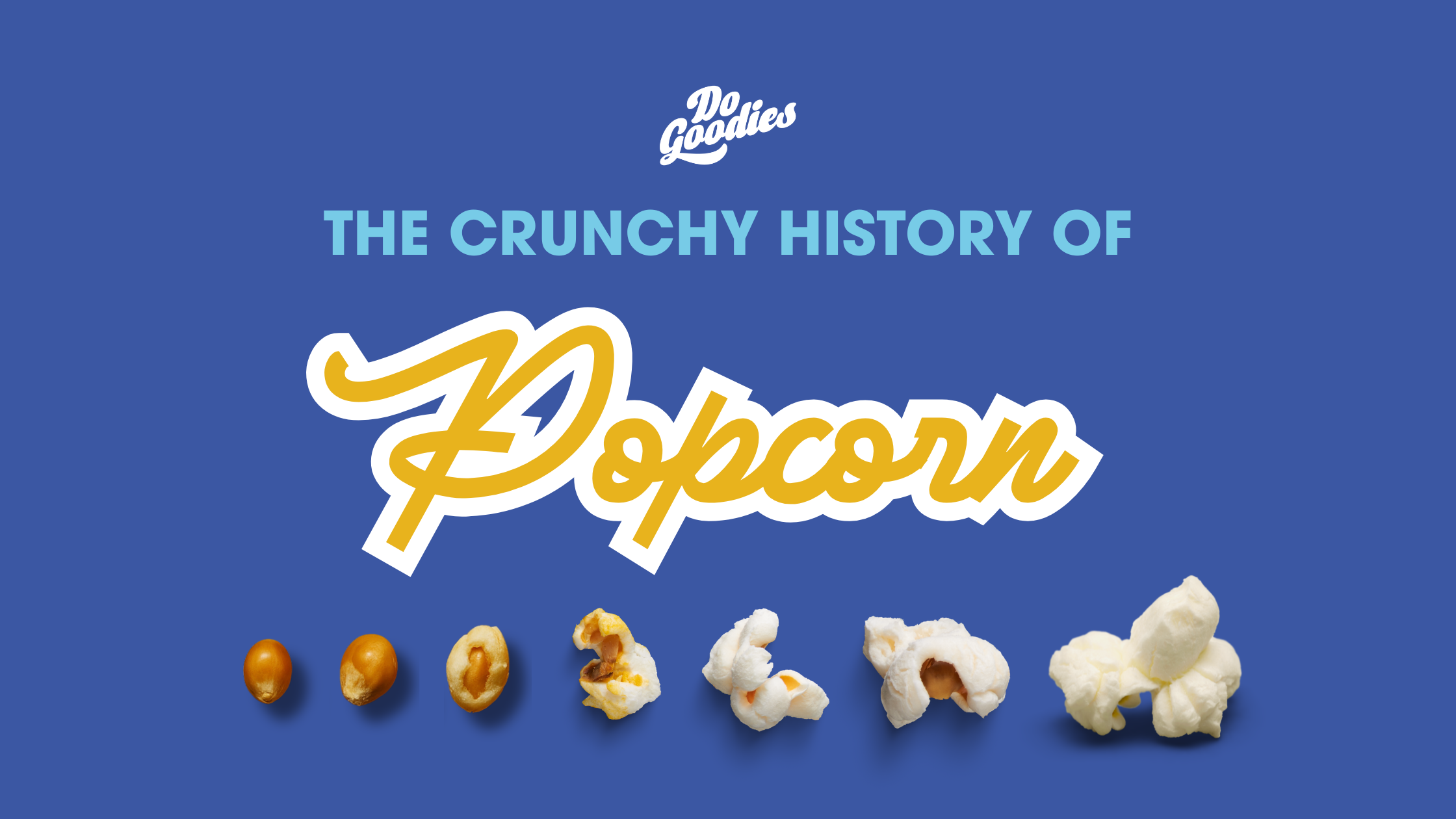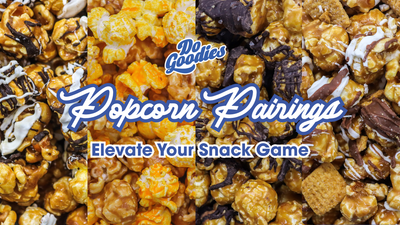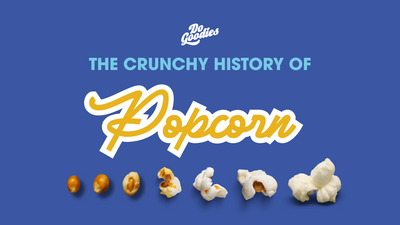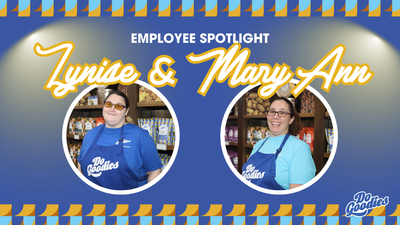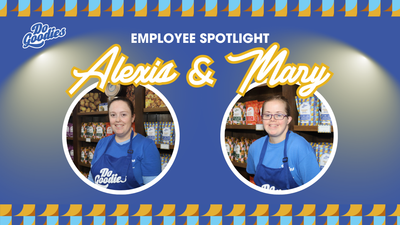The Crunchy History of Popcorn: From Ancient Grains to DoGoodies!
Popcorn is one of the world’s most beloved snacks. Whether at the movies, during family movie nights, or just as a quick and easy snack, it’s hard to imagine life without this crunchy treat. But did you know that popcorn has a fascinating history that stretches back thousands of years? Let’s take a journey through time to explore the origins of popcorn and how it became the snack we know and love today.
The Origins of Popcorn: Ancient Roots
The story of popcorn begins with the ancient peoples of the Americas. Evidence of popcorn dates back over 5,000 years to the Americas, where indigenous people were popping corn long before it became a global snack.
-
Archaeological Evidence: The oldest evidence of popcorn comes from New Mexico, where archaeologists have discovered popcorn kernels that are over 5,600 years old. These kernels were found in a cave, preserved by the dry, cool environment, providing us with a glimpse of ancient snack-time traditions.
-
Native American Use: Native American tribes like the Aztecs, Hopi, and Zuni had been using popcorn for centuries. They would pop corn kernels by throwing them into hot sand or using heated stones. Popcorn was not only a food source, but it also held cultural significance. Some tribes used it in religious ceremonies, and the Aztecs even wore popcorn as decoration during rituals and festivals.
The Science Behind the Pop
Popcorn’s distinctive pop happens because of its unique structure. The kernels contain a small amount of water inside a hard outer shell called the pericarp. When heat is applied, the moisture inside the kernel turns to steam. This pressure builds until the kernel explodes, turning the inside of the kernel into the airy, crunchy puff we recognize as popcorn.
While ancient civilizations knew how to make popcorn, it wasn’t until later that scientists began to understand the science behind this fascinating transformation. The perfect combination of heat and moisture is what gives popcorn its unique texture, and this discovery would play a pivotal role in popcorn’s rise to fame.
Popcorn’s Evolution in the 19th Century
While popcorn was well-known to Native Americans, it wasn’t until the 19th century that it became popular in the United States. The industrial revolution and new technologies would help propel popcorn into the snack we know today.
-
The Invention of the Popcorn Machine: In 1885, a man named Charles Cretors revolutionized popcorn production with the invention of the popcorn machine. Cretors, a Chicago-based candy maker, developed a machine that could pop corn in large quantities, making popcorn easier to mass-produce. This was a game-changer, and the popcorn industry began to grow rapidly, especially in urban areas.
-
Popcorn and the Rise of Street Vendors: By the turn of the century, street vendors in cities like Chicago and New York were selling fresh, popped popcorn on every corner. The snack was affordable, easy to prepare, and gained widespread popularity among working-class families.
The Golden Age of Popcorn: Movie Theaters and Popcorn’s Iconic Status
Popcorn’s next major leap in popularity came with the rise of cinema in the early 20th century. The combination of movies and popcorn created an iconic cultural association that remains strong to this day.
-
The Great Depression: During the Great Depression of the 1930s, popcorn’s popularity soared. With its low cost and wide availability, it became a cheap, filling snack for families struggling to make ends meet. Movie theaters, which were also struggling financially, began selling popcorn as a way to supplement their income. The price of a ticket might be low, but popcorn provided a way for movie theaters to turn a profit.
-
The Influence of Movie Theaters: Movie theaters embraced popcorn as their snack of choice, and by the 1940s and 1950s, popcorn was firmly entrenched as the quintessential movie snack. The aroma of freshly popped popcorn and the sound of kernels popping became synonymous with the excitement of going to the movies.
-
The Microwave Revolution: In the 1980s, the introduction of microwave popcorn further solidified popcorn's place in American households. With the convenience of popping it at home, people could enjoy their favorite snack at any time.
Popcorn Today: A Global Snack Phenomenon
Today, popcorn is a global snack enjoyed by millions around the world. It has evolved from a simple food source for ancient civilizations to a multi-billion-dollar industry.
-
Popcorn and Health Trends: In recent years, popcorn has seen a resurgence in popularity as a healthier snack option. Air-popped popcorn is low in calories, high in fiber, and can be flavored with a variety of seasonings. Many health-conscious consumers now see popcorn as a great alternative to more processed snacks.
-
Flavors and Innovations: Popcorn is no longer just buttered or salted. From caramel and cheddar to s’mores to peanut butter and jelly, the variety of popcorn flavors on the market is staggering. Gourmet popcorn shops and companies like Do Goodies have sprung up, offering unique takes on the classic snack.
Fun Facts About Popcorn
-
Popcorn is the official snack of National Popcorn Day, celebrated every January 19th.
-
Americans eat approximately 17 billion quarts of popcorn each year!
-
The world’s largest popcorn ball, created in 2006, weighed over 9,000 pounds and was nearly 8 feet in diameter!
From ancient grains to movie theater concession stands, popcorn has a long and fascinating history. It’s more than just a snack; it’s a cultural icon that has evolved with technology, economics, and entertainment trends. Whether you’re enjoying a bowl of buttered popcorn at the movies or experimenting with new flavors at home, you’re part of a tradition that stretches back thousands of years. So next time you hear that satisfying "pop," take a moment to appreciate the rich history behind this humble yet enduring snack.


